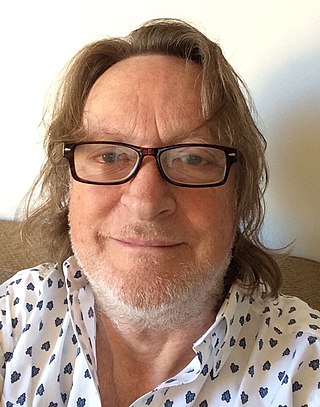
An intelligence quotient (IQ) is a total score derived from a set of standardised tests or subtests designed to assess human intelligence. The abbreviation "IQ" was coined by the psychologist William Stern for the German term Intelligenzquotient, his term for a scoring method for intelligence tests at University of Breslau he advocated in a 1912 book.

Psychological statistics is application of formulas, theorems, numbers and laws to psychology. Statistical methods for psychology include development and application statistical theory and methods for modeling psychological data. These methods include psychometrics, factor analysis, experimental designs, and Bayesian statistics. The article also discusses journals in the same field.

Experimental psychology refers to work done by those who apply experimental methods to psychological study and the underlying processes. Experimental psychologists employ human participants and animal subjects to study a great many topics, including sensation & perception, memory, cognition, learning, motivation, emotion; developmental processes, social psychology, and the neural substrates of all of these.
In philosophy of mind, neuroscience, and cognitive science, a mental image is an experience that, on most occasions, significantly resembles the experience of "perceiving" some object, event, or scene, but occurs when the relevant object, event, or scene is not actually present to the senses. There are sometimes episodes, particularly on falling asleep and waking up, when the mental imagery may be dynamic, phantasmagoric and involuntary in character, repeatedly presenting identifiable objects or actions, spilling over from waking events, or defying perception, presenting a kaleidoscopic field, in which no distinct object can be discerned. Mental imagery can sometimes produce the same effects as would be produced by the behavior or experience imagined.

Visual memory describes the relationship between perceptual processing and the encoding, storage and retrieval of the resulting neural representations. Visual memory occurs over a broad time range spanning from eye movements to years in order to visually navigate to a previously visited location. Visual memory is a form of memory which preserves some characteristics of our senses pertaining to visual experience. We are able to place in memory visual information which resembles objects, places, animals or people in a mental image. The experience of visual memory is also referred to as the mind's eye through which we can retrieve from our memory a mental image of original objects, places, animals or people. Visual memory is one of several cognitive systems, which are all interconnected parts that combine to form the human memory. Types of palinopsia, the persistence or recurrence of a visual image after the stimulus has been removed, is a dysfunction of visual memory.
Auditory imagery is a form of mental imagery that is used to organize and analyze sounds when there is no external auditory stimulus present. This form of imagery is broken up into a couple of auditory modalities such as verbal imagery or musical imagery. This modality of mental imagery differs from other sensory images such as motor imagery or visual imagery. The vividness and detail of auditory imagery can vary from person to person depending on their background and condition of their brain. Through all of the research developed to understand auditory imagery behavioral neuroscientists have found that the auditory images developed in subjects' minds are generated in real time and consist of fairly precise information about quantifiable auditory properties as well as melodic and harmonic relationships. These studies have been able to recently gain confirmation and recognition due to the arrival of Positron emission tomography and fMRI scans that can confirm a physiological and psychological correlation.

David Francis Marks is a psychologist, author and editor of numerous articles and books largely concerned with five areas of psychological research – judgement, health psychology, consciousness, parapsychology and intelligence. Marks is also the originator of the General Theory of Behaviour, and has curated exhibitions and books about artists and their works.
The Liebowitz Social Anxiety Scale (LSAS) is a short questionnaire developed in 1987 by Michael Liebowitz, a psychiatrist and researcher at Columbia University and the New York State Psychiatric Institute. Its purpose is to assess the range of social interaction and performance situations feared by a patient in order to assist in the diagnosis of social anxiety disorder. It is commonly used to study outcomes in clinical trials and, more recently, to evaluate the effectiveness of cognitive-behavioral treatments. The scale features 24 items, which are divided into two subscales. 13 questions relate to performance anxiety and 11 concern social situations. The LSAS was originally conceptualized as a clinician-administered rating scale, but has since been validated as a self-report scale.
Creative visualization is the cognitive process of purposefully generating visual mental imagery, with eyes open or closed, simulating or recreating visual perception, in order to maintain, inspect, and transform those images, consequently modifying their associated emotions or feelings, with intent to experience a subsequent beneficial physiological, psychological, or social effect, such as expediting the healing of wounds to the body, minimizing physical pain, alleviating psychological pain including anxiety, sadness, and low mood, improving self-esteem or self-confidence, and enhancing the capacity to cope when interacting with others. It can also be a used as a way of facilitating an impossible imagination game.
In the study of psychology, neuroticism has been considered a fundamental personality trait. For example, in the Big Five approach to personality trait theory, individuals with high scores for neuroticism are more likely than average to be moody and to experience such feelings as anxiety, worry, fear, anger, frustration, envy, jealousy, pessimism, guilt, depressed mood, and loneliness. Such people are thought to respond worse to stressors and are more likely to interpret ordinary situations, such as minor frustrations, as appearing hopelessly difficult. The responses can include maladaptive behaviors, such as dissociation, procrastination, substance use, etc., which aids in relieving the negative emotions and generating positive ones.
The Bayley Scales of Infant and Toddler Development is a standard series of measurements originally developed by psychologist Nancy Bayley used primarily to assess the development of infants and toddlers, ages 1–42 months. This measure consists of a series of developmental play tasks and takes between 45 – 60 minutes to administer and derives a developmental quotient (DQ) rather than an intelligence quotient (IQ). Raw scores of successfully completed items are converted to scale scores and to composite scores. These scores are used to determine the child's performance compared with norms taken from typically developing children of their age. The Bayley-III has three main subtests; the Cognitive Scale, which includes items such as attention to familiar and unfamiliar objects, looking for a fallen object, and pretend play, the Language Scale, which taps understanding and expression of language, for example, recognition of objects and people, following directions, and naming objects and pictures, and the Motor Scale, which assesses gross and fine motor skills such as grasping, sitting, stacking blocks, and climbing stairs. There are two additional Bayley-II Scales depend on parental report, including the Social-Emotional scale, which asks caregivers about such behaviors as ease of calming, social responsiveness, and imitation play, and the Adaptive Behavior scale which asks about adaptions to the demands of daily life, including communication, self-control, following rules, and getting along with others. The Bayley-III Cognitive and Language scales are good predictors of preschool mental test performance. These scores are largely used for screening, helping to identify the need for further observation and intervention, as infants who score very low are at risk for future developmental problems.
The n-back task is a continuous performance task that is commonly used as an assessment in psychology and cognitive neuroscience to measure a part of working memory and working memory capacity. The n-back was introduced by Wayne Kirchner in 1958. N-Back games are purported to be a training method to improve working memory and working memory capacity and also increase fluid intelligence, although evidence for such effects are lacking.
The Narcissistic Personality Inventory (NPI) was developed in 1979 by Raskin and Hall, and since then, has become one of the most widely utilized personality measures for non-clinical levels of the trait narcissism. Since its initial development, the NPI has evolved from 220 items to the more commonly employed NPI-40 (1984) and NPI-16 (2006), as well as the novel NPI-1 inventory (2014). Derived from the DSM-III criteria for Narcissistic personality disorder (NPD), the NPI has been employed heavily by personality and social psychology researchers.
Guided imagery is a mind-body intervention by which a trained practitioner or teacher helps a participant or patient to evoke and generate mental images that simulate or recreate the sensory perception of sights, sounds, tastes, smells, movements, and images associated with touch, such as texture, temperature, and pressure, as well as imaginative or mental content that the participant or patient experiences as defying conventional sensory categories, and that may precipitate strong emotions or feelings in the absence of the stimuli to which correlating sensory receptors are receptive.
The Levenson Self-Report Psychopathy scale (LSRP) is a 26-item, 4-point Likert scale, self-report inventory to measure primary and secondary psychopathy in non-institutionalised populations. It was developed in 1995 by Michael R. Levenson, Kent A. Kiehl and Cory M. Fitzpatrick. The scale was created for the purpose of conducting a psychological study examining antisocial disposition among a sample of 487 undergraduate students attending psychology classes at the University of California, Davis.
Fear of negative evaluation (FNE) or fear of failure, also known as atychiphobia, is a psychological construct reflecting "apprehension about others' evaluations, distress over negative evaluations by others, and the expectation that others would evaluate one negatively". The construct and a psychological test to measure it were defined by David Watson and Ronald Friend in 1969. FNE is related to specific personality dimensions, such as anxiousness, submissiveness, and social avoidance. People who score high on the FNE scale are highly concerned with seeking social approval or avoiding disapproval by others, and may tend to avoid situations where they have to undergo evaluations. High FNE subjects are also more responsive to situational factors. This has been associated with conformity, pro-social behavior, and social anxiety.
Empathy quotient (EQ) is a psychological self-report measure of empathy developed by Simon Baron-Cohen and Sally Wheelwright at the Autism Research Centre at the University of Cambridge. EQ is based on a definition of empathy that includes cognition and affect.
Aphantasia is the inability to create mental imagery.
Audio therapy is the clinical use of recorded sound, music, or spoken words, or a combination thereof, recorded on a physical medium such as a compact disc (CD), or a digital file, including those formatted as MP3, which patients or participants play on a suitable device, and to which they listen with intent to experience a subsequent beneficial physiological, psychological, or social effect.
Hyperphantasia is the condition of having extremely vivid mental imagery. It is the opposite condition to aphantasia, where mental visual imagery is not present. The experience of hyperphantasia is more common than aphantasia and has been described as being "as vivid as real seeing". Hyperphantasia constitutes all five senses within vivid mental imagery; however, "visual" mental imagery research dominates the literature, and there is a lack of research on the other four senses.





